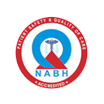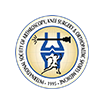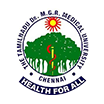Three bones come together to form the shoulder, the collar bone (clavicle), the shoulder blade (scapula) and upper arm bone (humerus). The acromion, a part of the shoulder blade, forms the top of the shoulder.
The shoulder is made up of four separate joints. The interrelated action of these four joints allows a complex and extremely wide range of shoulder movements.
The ball-and-socket joint or glenohumeral joint is the main joint of the shoulder. This joint is reinforced and assisted in its movement by the rotator cuff, a combination of four tendons and associated muscles. The muscles arise on various parts of the shoulder blade, and their tendons attach to the upper arm bone (tendons are stringy tissues that connect muscles to bone).
A ‘ball’ at the top of the upper arm bone (the humerus) fits neatly into a ‘socket’ called the glenoid, which is part of the shoulder blade (scapula). But unlike the hip joint, where the ball sits in a deep, well-protected socket, the shoulder socket is very shallow. The shallow socket of the shoulder is given some extra depth by a structure called the labrum. The labrum is a thickened firm tissue that is attached to and surrounds the main glenohumeral joint. It provides stability to the shoulder joint when it is lifted in a movement like throwing. The surrounding ligaments, muscles and tendons that move the shoulder joint help to keep it stable. One of the tendons of the biceps muscles runs through the shoulder joint and further helps to stabilize the joint. Because of this anatomy, the shoulder is the most frequently dislocated major joint in the body.
Between the rotator cuff and the bony arch of the acromion lie two fluid-filled sacs called bursae. They protect the rotator cuff and allow smooth movement of the tendons over the bone.
It is also prone to various other injuries and chronic problems that can be painful, cause sleep disturbances and hinder a person’s ability to perform ordinary tasks or sporting activities.
Most problems in the shoulder involve the muscles, ligaments and tendons rather than the bones. Shoulder injuries can be caused by sports activities that involve excessive overhead motion (ex: swimming, tennis and cricket). But they can also be the result of everyday activities like painting, hanging curtains and gardening. The arthroscope is the most accurate diagnostic tool for confirming shoulder problems.
Ask our Specialist
For specific orthopedic ailment related queries please fill in the form and get in touch with our specialistsDr. David V Rajan - Arthroscopy Surgery
Travelling Tips for Patients with Knee Pain
What is Frozen Shoulder?
Dr. P Yuvarajan-Joint Reconstruction, Hip Pre
Tips for Staying Healthy while working from Home
Rotator Cuff Tear: Symptoms, Causes and Treatment
Patient Success Stories
Went in for my Son's shoulder surgery last Saturday, the modern decor, pastel colors reminded me of anything but a hospi...
Read more Google reviewMarvelous service and treatment. Especially Dr.Shyamsundar and Dr.Sri Ram their great service. Keep going, thank you.
Read more Facebook reviewOne of the most caring hospital which I have encountered after a long time. From the doctors to support staff, all we t...
Read more Google reviewGreat thanks to Dr David Rajan and Dr Santhosh and team for their best effort in making my mother surgery a success owin...
Read more MeenakhiYou will not find a better Ortho hospital with so much care especially during Covid pandemic times. We had stayed for tr...
Read more Prabhu NarayanMrs. Maragatham (Name changed), a 50-year-old woman came to Ortho-One with severe pain in her right knee which affected ...
Read more Mrs. MaragathamI’m Krishnamoorthy aged 82. I had pain in both knees. Compared to all the other hospitals, I feel Ortho-One is the bes...
Read more Krishnamoorthy



